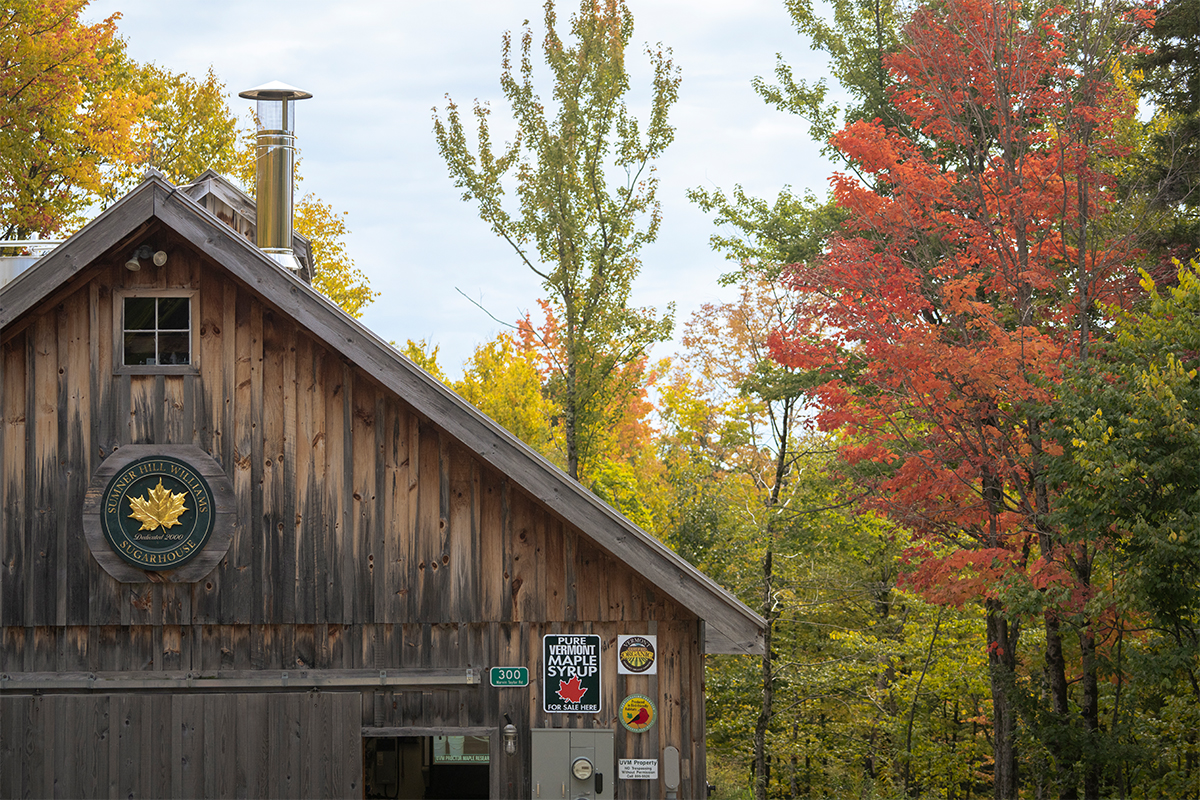Are Environmental Certification Programs Effective? Bird-Friendly Maple, A Case Study
Dec. 19th 2023Maple syrup is quintessential to Vermont—a source of pride for most Vermonters who scoff at Log Cabin on pancakes. It’s common to find maple syrup stands on the side of the road from the growing population of maple sugarmakers in the region. Audubon Vermont is interested in how the growth of maple production could impact forest biodiversity, ecosystem services, and resilience to ecological stressors.
“Traditional sugarbush management may include understory removal, which can eliminate forest regeneration, resulting in swaths of sugar maple that lack structural complexity,” explained Steve Hagenbuch, Conservation Biologist at Audubon Vermont. “This could have a variety of negative effects on biodiversity ranging from declines in understory species richness to reduced abundance and diversity of breeding forest birds and their primary food source—bugs.”
Exploring the nexus of forest management and sustainable agriculture, Audubon created the Bird-Friendly Maple program which recognizes maple producers who use bird-friendly forestry practices. Their products can be marked with a bird-friendly maple emblem so consumers can distinguish between products. The program gets inspiration from the successes of internationally recognized certifications such as the Sustainable Forestry Initiative (SFI) and Forest Stewardship Council (FSC), the Smithsonian’s Bird-Friendly Coffee certification, and targeted regional efforts such as the Northeast Organic Farmers Association certification. The industries of forestry and agriculture have long recognized certification as a market-based solution to approach conservation.
But what are bird-friendly practices and how do we know they restore bird populations?
To determine the impact bird-friendly sugarbush management had on bird habitat, Audubon Vermont teamed up with the Vermont Center for Ecostudies to examine 17 site-specific variables that may impact forest birds. The researchers surveyed 14 active sugarbushes across northern Vermont between 2020 and 2021 ranging from 37 to 1,400 acres. They sampled for breeding birds, foliage and litter-dwelling bugs, vegetation, and native bees.
The team found four habitat variables that were important to the forest bird community.
- Herbaceous cover
- Litter depth
- Coarse woody material
- High canopy cover
The project recommends maple sugarmakers maintain a high percentage of native, shade-tolerant herbaceous cover, increase woody material by leaving downed logs and treetops when possible, and be cognizant of earthworm presence and leaf litter depth.
Sugarbush management can create suitable habitat for both early-successional species (particularly Mourning and Chestnut-sided warblers) as well as ground/shrub species (including Veery and Black-throated Blue Warbler) using treatments that create small canopy gaps.
Overall, they found these practices do lead to increased native bird abundance and diversity but different birds respond to each variable, so the researchers recommend using these practices in tandem. The Bird-Friendly Maple partnership is using the findings from this research to inform their program. Future research that looks at a greater variety of sugarbushes could help inform future sugarbush management strategies.
“Since this research did not account for all of the factors that impact bird habitat, we use management practices suggested by other research to inform our program as well,” said Hagenbusch. “Although the efficacy study did not show any significant correlations between overstory tree species diversity and bird abundance, we know strong relationships can occur here, so we still suggest overstory tree diversity in sugarbush management.”
Now, the program is interested in making more of an impact—through becoming a true certification program. As of now, Bird-Friendly Maple serves as a recognition program; enrolled maple producers work directly with Audubon to manage their sugarbushes with birds in mind. But to become a certification program, they would add a third-party for verification.
“While the program may not reach this point immediately, it is evident that Bird-Friendly Maple is growing, and I believe that it will mature into a certification program like bird friendly coffee,” said Audubon Vermont conservation intern, Drew Conde. “This would not only benefit maple producers, bulk packagers, consumers, but most importantly the birds that inhabit sugarbushes who need these forest spaces just as we do.”
 ecoNEWS VT
ecoNEWS VT